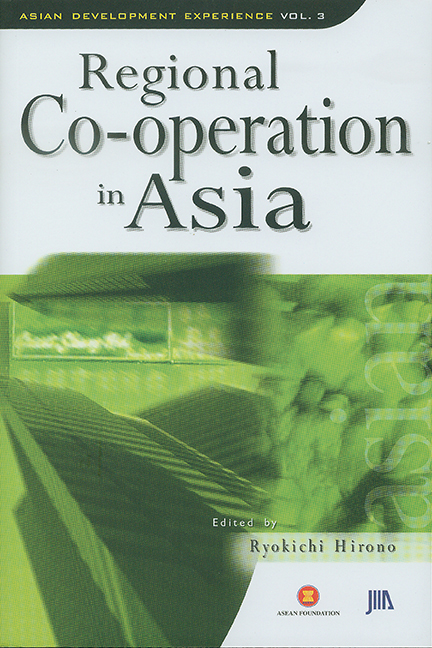Book contents
- Frontmatter
- Contents
- List of Tables
- List of Figures
- List of Contributors
- Acknowledgements
- 1 Structural Changes and Domestic Reforms in Singapore: Challenges and Implications to Regional Co-operation in ASEAN and East Asia
- 2 Asia-Japan Co-operation Toward East Asian Integration
- 3 The Impact of External Changes and Japan's Role in Industrializing Thailand
- 4 Confronting Regionalism in Asia: A View from the Philippines
- 5 Japan's Role in ASEAN-10 Under Globalization: A Japanese Perspective
- OTHER BOOKS IN THIS SERIES
4 - Confronting Regionalism in Asia: A View from the Philippines
Published online by Cambridge University Press: 21 October 2015
- Frontmatter
- Contents
- List of Tables
- List of Figures
- List of Contributors
- Acknowledgements
- 1 Structural Changes and Domestic Reforms in Singapore: Challenges and Implications to Regional Co-operation in ASEAN and East Asia
- 2 Asia-Japan Co-operation Toward East Asian Integration
- 3 The Impact of External Changes and Japan's Role in Industrializing Thailand
- 4 Confronting Regionalism in Asia: A View from the Philippines
- 5 Japan's Role in ASEAN-10 Under Globalization: A Japanese Perspective
- OTHER BOOKS IN THIS SERIES
Summary
Introduction
The Asian financial crisis can be said to have been the fruit of East Asia's own success as late-comer economies. Led by the NIEs in the late eighties and early nineties, the East Asian firmament was studded by high-flying economies, with the possible exception of the Philippines that caught the attention of the world for having defied the Kuznets ‘law’ of growth. They grew but without passing through a phase of social inequity. Their stunning growth performance easily became fuel to capital flows that accelerated with every good news. With growth came naturally the self-confidence that made these countries bring down their defenses, albeit prematurely, that previously guarded their markets of both goods and capital. It was generally a period of euphoria where daily trading in world capital markets reached $1.26 trillion in 1995, or seventy times the volume of world trade, considering that the ratio was only 10:1 (at a daily trading of $80 billion) only a decadeand-a-half earlier (Rana and Yap 2001). In such a heady environment, bad news eventually snowballed into a crisis of confidence and quite quickly led into the contagion that made investors run over one other to beat an exit. Between 1996 and 1998, $95.6 billion of private capital flows were reversed for the five crisis-affected countries, or equal to 10% of their GDP.
The Philippines was some kind of an outlier in this miracle story of East Asian growth. Considered the ‘basket case’ or the ‘sick man’ of Asia, the eighties were a lost decade for her, still struggling as she was with the political and economic instability that were the aftermath of the Marcos dictatorship. But now by hindsight, it is commonly judged it was precisely its historically weak economic performance relative to its more successful neighbours that made her appear less vulnerable to the international ‘hot money flows’ that plagued the countries in the region. Moreover, the country's relatively repressed and inefficient financial systems had earlier led to crises in the '70s and ' 80s, and forced the Philippine government to undertake a number of important financial sector reforms in the’ 90s (to be discussed in Section 2, following).
- Type
- Chapter
- Information
- Asian Development ExperienceRegional Co-operation in Asia, pp. 73 - 96Publisher: ISEAS–Yusof Ishak InstitutePrint publication year: 2004



